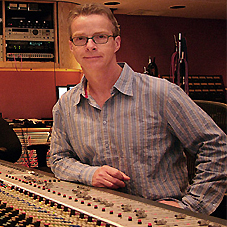
Most recording musicians, engineers and producers are well aware what a difference mastering can make to our mixes. And as we’ve discussed in previous columns (such as Audio Mastering Basics: Taking Your Music That Extra Step), mastering is an art form in itself, and is best placed in the hands of a specialist. But even expert mastering engineers can only accomplish so much, and it’s largely dependent on the raw materials they’re given to work with. With that in mind, here’s a look at some of the top mistakes people make in preparing their mix for mastering, with the help of veteran mastering engineer of Universal Mastering Studios West, Pete Doell.
1. Too Much Bottom
Excessive low-end is probably one of the most common problems in mixes coming from project studios. Usually this is directly related to the mixing environment. The average home studio or project room is lacking in real acoustical treatment is and rife with reflective surfaces and bass traps.
The result is an uneven response across the bass spectrum, with some notes being overemphasized and others being practically inaudible. This translates to a poorly balanced low end in your mix.
Doell offers an important pointer: “The most egregious mistake is that people’s monitors aren’t placed properly,” he says. “Speakers need to be as far apart from each other as you are from them. So if your mix position is, say, three feet from either speaker, the speakers should be exactly three feet apart. Moreover, if the speakers are too close or too far from a wall, the apparent bass response will be off.”
2. Terrible Treble
On the other end of the spectrum, high-end can also cause its own issues. While not as hard to hear in the project studio environment, those high frequencies can show up differently during the mastering phase.

“Most mixes will want a bit of ‘polish’ or ‘shine’ in mastering,” says Doell. “When this good stuff is applied, sibilance can really creep up. Do yourself a big favor and de-ess your vocals, maybe even your hi-hat just a bit, even if you don’t hear too much of an issue. Your mastering engineer will thank you.”
The bottom line, as Doell points out, is to use EQ wisely and sparingly.
3. No Dynamic Range
This is probably one of the most discussed topics in modern music mixing circles. Over the past decade or so, the quest for radio airplay has created a battle for attention that has manifested itself in loudness – the perception being that louder the track, the more it will grab the listener.
It’s a mentality that started with TV and radio advertisers (notice how a loud commercial gets your attention) and is a direct result of today’s vastly improved compressor technology, which has enabled us to create “radio mixes” where everything is loud, punchy and in your face.
The problem with pumping up the apparent volume on your mix this way is that it works by compressing the dynamic range of your tracks. Dynamic range is defined as the difference between the loudest and softest sounds in your track.




















